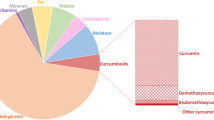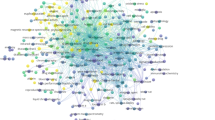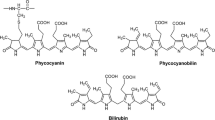Abstract
Atherosclerosis has been linked to chronic inflammatory processes. Changes in the levels of lipoproteins, especially low-density lipoprotein or its variants, as well as inflammatory markers are risk factors for the atherosclerosis. In the present study, an experimental model of rheumatoid arthritis was developed by administrating collagen suspension intradermally in the tail region of Wistar albino rats. At the same time, a suspension of hesperidin (50 mg/kg body weight) and daidzein (20 mg/kg body weight) was orally administrated. The compounds were given in the morning and evening for 21 days. Levels of inflammatory markers in the homogenate of knee joints of experimental rats as well as plasma lipoproteins were investigated. The administration of hesperidin and daidzein caused significant (p < 0.001) decrease in articular elastase activity, TNF-α, and malondialdehyde levels. Further, arthritis scoring and histological findings supported the anti-inflammatory actions of the test compounds. Interestingly, the test compounds also lowered the plasma low-density lipoprotein cholesterol, very low-density lipoprotein cholesterol, and triglyceride but increased the level of high-density lipoprotein cholesterol. The test compounds thus ameliorated the risk factors of atherosclerosis. Furthermore, antioxidant roles of hesperidin as well as daidzein were evident from decrease in free radical load demonstrated as increase in total antioxidant level in plasma of arthritic animals treated with hesperidin and daidzein. In a separate in vitro experiment, enhanced free radical scavenging activity of hesperidin was demonstrated against 2,2-diphenyl-1-picrylhydrazyl and 2,2-azinobis-3-ethylbenzothiazoline-6-sulfonic acid. The anti-inflammatory, hypolipidemic, and antioxidant actions of the naturally occurring test compounds, particularly hesperidin, seem to be quite effective against rheumatoid arthritis and atherosclerosis. Thus, their consumption may be helpful in prevention or at least delaying the onset of these diseases in susceptible individuals.





Similar content being viewed by others
Abbreviations
- ABTS·+ :
-
2,2-Azinobis-3-ethylbenzothiazoline-6-sulfonic acid
- CAD:
-
Coronary artery disease
- CD:
-
Conjugated diene
- CHD:
-
Coronary heart disease
- CIAD:
-
Daidzein-Treated Rheumatoid Arthritis
- CIAH:
-
Hesperidin-Treated Rheumatoid Arthritis
- CIRA:
-
Collagen-Induced Rheumatoid Arthritis Control
- CTRL:
-
Normal Control
- CVD:
-
Cardiovascular disease
- DPPH· :
-
2,2-Diphenyl-1-picrylhydrazyl
- HDL-C:
-
High-density lipoprotein cholesterol
- Lb-LDL:
-
Large buoyant-LDL
- LDL:
-
Low-density lipoproteins
- MDA:
-
Malondialdehyde
- NOS:
-
Nitric oxide synthase
- RNS:
-
Reactive nitrogen species
- ROS:
-
Reactive oxygen species
- RA:
-
Rheumatoid arthritis
- Sd-LDL:
-
Small dense-LDL
- TBARS:
-
Thiobarbituric acid reactive substances
- TG:
-
Triglyceride
- TNF- α:
-
Tumor necrosis factor-α
- VLDL-C:
-
Very low-density lipoprotein cholesterol
References
Shukla M, Gupta K, Rasheed Z, Khan KA, Haqqi TM (2008) Consumption of hydrolyzable tannins-rich pomegranate extract suppresses inflammation and joint damage in rheumatoid arthritis. Nutrition 24:733–743
Firestein GS (2003) Evolving concepts of rheumatoid arthritis. Nature 423:356–361
Manzi S, Meilahn EN, Rairie JE, Conte CG, Medsger TA, Jansen-McWilliams L et al (1997) Age-specific incidence rates of myocardial infarction and angina in women with systemic lupus erythematosus: comparison with the framingham study. Am J Epidemiol 145:408–415
Van Doornum S, McColl G, Wicks IP (2002) Accelerated atherosclerosis: an extraarticular feature of rheumatoid arthritis? Arthritis Rheum 46:862–873
Kitas GD, Erb N (2003) Tackling ischaemic heart disease in rheumatoid arthritis. Rheumatology 42:607–613
Executive Summary of The Third Report of The (2001) National Cholesterol Education Program (NCEP) expert panel on detection, evaluation, and treatment of high blood cholesterol in adults (adult treatment panel III). JAMA 285:2486–2497
Blake DR, Merry P, Unsworth J, Kidd BL, Outhwaite JM, Ballard R et al (1989) Hypoxic-reperfusion injury in the inflamed human joint. Lancet 1:289–293
Bauerova K, Bezek A (1999) Role of reactive oxygen and nitrogen species in etiopathogenesis of rheumatoid arthritis. Gen Physiol Biophys 18:15–20
Hagfors L, Leanderson P, Sköldstam L, Andersson J, Johansson G (2003) Antioxidant intake, plasma antioxidants and oxidative stress in a randomized, controlled, parallel, mediterranean dietary intervention study on patients with rheumatoid arthritis. Nutr J 2:5
Walwadkar SD, Suryakar AN, Katkam RV, Kumbar KM, Ankush RD (2006) Oxidative stress and calcium-phosphorus levels in rheumatoid arthritis. Indian J Clin Biochem 21:134–137
Champe PC, Harvey RA, Ferrier DR (2008) Lipincott’s illustrated reviews: biochemistry, 4th edn. Wolters Kluwer (India) Pvt Ltd, New Delhi
Feldman M, Maini RM (2001) Anti–TNF-α therapy of rheumatoid arthritis: what have we learned. Ann Rev Immunol 19:163–196
Choy EH, Panayi GS (2001) Cytokine pathways and joint inflammation in rheumatoid arthritis. N Engl J Med 344:907–916
Hayden MS, Ghosh S (2004) Signaling to NF-kB. Genes Dev 18:2195–2224
Schieven GS (2005) The biology of p38 kinase: a central role in inflammation. Curr Top Med Chem 5:921–928
Levitan I, Volkov S, Subbaiah PV (2010) Oxidized LDL: diversity, patterns of recognition, and pathophysiology. Antioxid Redox Signal 13:39–75
Choi EJ, Lee BH, Lee K, Chee KM (2005) Long-term combined administration of quercetin and daidzein inhibits quercetin-induced suppression of glutathione antioxidant defences. Food Chem Toxicol 43:793–798
Chin-Dusting JP, Fisher LJ, Lewis TV, Piekarska A, Nestel PJ, Husband A (2001) The vascular activity of some isoflavone metabolites: implications for a cardioprotective role. Br J Clin Pharmacol 133:595–605
Jovanovic SV, Steenken S, Tosic M, Marjanovic B, Simic MG (1994) Flavonoids as antioxidants. J Am Chem Soc 116:4846–4851
Benavente-Garcia O, Castillo J (2008) Update on uses and properties of citrus flavonoids: new findings in anticancer, cardiovascular, and anti-inflammatory activity. J Agric Food Chem 56:6185–6205
Mohammadshahi M, Haidari F, Saei AA, Rashidi B, Mahboob S, Rashidi MR (2013) Soy protein, genistein, and daidzein improve serum paraoxonase activity and lipid profiles in rheumatoid arthritis in rats. J Med Food 16:147–154
Myers LK, Rosloniec EF, Cremer MA, Kang AH (1997) Collagen-induced arthritis, an animal model of autoimmunity. Life Sci 61:1861–1878
Cook AD, Stockman A, Brand CA, Tait BD, Mackay IR, Muirden KD et al (1999) Antibodies to type-II collagen and HLA disease susceptibility markers in rheumatoid arthritis. Arthritis Rheumatol 42:2569–2576
Haqqi TM, Anthony DD, Gupta S, Ahmad N, Lee MS, Kumar GK et al (1999) Prevention of collagen-induced arthritis in mice by a polyphenolic fraction from green tea. Proc Natl Acad Sci 96:4524–4529
David DB, Kary AL, Edward FR (2007) Collagen-induced arthritis. Nat Protoc 2:1269–1275
Mahmoud AM, Ashour MB, Abdel-Moneim A, Ahmed OM (2012) Hesperidin and naringin attenuate hyperglycemia-mediated oxidative stress and proinflammatory cytokine production in high fat fed/streptozotocin-induced type 2 diabetic rats. J Diabetes Complicat 26:483–490
Salem HRA, El-Raouf Mohamed AA, Saleh EM, Shalaby KAF (2012) Influence of hesperidin combined with sinemet on genetical and biochemical abnormalities in rats suffering from parkinson’s disease. Life Sci J 4:930–945
Pugalendhi P, Manoharan S, Baskaran N (2010) Effects of genistein and daidzein, in combination, on immunoexpression pattern of ER, PR and HER-2/neu during 7, 12-dimethylbenz (a) anthracene induced mammary carcinogenesis in rats. Int J Res Pharm Sci 4:421–427
Pugalendhi P, Manoharan M, Suresh K, Baskaran N (2011) Genistein and daidzein, in combination, protect cellular integrity during 7,12-dimethylbenz[a]anthracene (DMBA) induced mammary carcinogenesis in Sprague-Dawley rats. Afr J Tradit Complement Altern Med 8:91–97
Mensor LL, Menezes FS, Leitão GG, Reis AS, dos Santos TC, Coube CS et al (2001) Screening of Brazilian plant extracts for antioxidant activity by the use of DPPH free radical method. Phytother Res 15:127–130
Ahmad S, Beg ZH (2014) Mitigating role of thymoquinone rich fractions from Nigella sativa oil and its constituents, thymoquinone and limonene on lipidemic-oxidative injury in rats. Springerplus 3:316
Re R, Pellegrini N, Proteggente A, Pannala A, Yang M, Rice-Evans C (1999) Antioxidant activity applying an improved ABTS radical cation decolorization assay. Free Radic Biol Med 26:1231–1237
Wieland H, Seidel D (1989) A simple method for precipitation of low-density lipoproteins. J Lipid Res 24:904–909
Bachorik PS, Albers JJ (1986) Precipitation methods for quantification of lipoproteins. Methods Enzymol 129:78–100
Kostner GM (1976) Letter: enzymatic determination of cholesterol in high-density lipoprotein fractions prepared by polyanion precipitation. Clin Chem 22:695
Annino JS, Giese RW (1976) Clinical chemistry: principles and procedures, 4th edn. Little Brown and Company, Boston
Trinder P (1969) Determination of glucose in blood using glucose oxidase with an alternative oxygen receptor. Ann Clin Biochem 6:24–27
Yoshimura K, Nakagawa S, Koyama S, Kobayashi T, Homma T (1994) Roles of neutrophil elastase and superoxide anion in leukotriene B4-induced lung injury in rabbit. J Appl Physiol 76:91–96
Umar S, Kumar A, Sajad M, Zargan J, Ansari M, Ahmad S et al (2013) Hesperidin inhibits collagen-induced arthritis possibly through suppression of free radical load and reduction in neutrophil activation and infiltration. Rheumatol Int 33:657–663
Mihara M, Uchiyama M (1978) Determination of malonaldehyde precursor in tissues by thiobarbituric acid test. Anal Biochem 86:271–278
Durie FH, Fava RA, Foy TM, Aruffo A, Ledbetter JA, Noelle RJ (1993) Prevention of collagen-induced arthritis with an antibody to gp39, the ligand for CD40. Science 261:1328–1330
Lowry OH, Rosebrough NJ, Farr AL, Randall RJ (1951) Protein measurement with the folin phenol reagent. J Biol Chem 193:265–275
Kavanaugh A (1994) Dyslipoproteinaemia in a subset of patients with rheumatoid arthritis. Ann Rheum Dis 53:551–552
Dessein PH, Joffe BI, Stanwix A, Botha AS, Moomal Z (2002) The acute phase response does not fully predict the presence of insulin resistance and dyslipidaemia in inflammatory arthritis. J Rheumatol 29:462–466
Park YB, Lee SK, Lee WK, Suh CH, Lee CW, Lee CH et al (1999) Lipid profiles in untreated patients with rheumatoid arthritis. J Rheumatol 26:1701–1704
Peters MJ, Vis M, van Halm VP, Wolbink GJ, Voskuyl AE, Lems WF et al (2007) Changes in lipid profile during infliximab and corticosteroid treatment in rheumatoid arthritis. Ann Rheum Dis 66:958–961
Nurmohamed MT (2007) Atherogenic lipid profiles and its management in patients with rheumatoid arthritis. Vasc Health Risk Manag 3:845–852
Toms TE, Panoulas VF, Kitas GD (2011) Dyslipidaemia in rheumatological autoimmune diseases. Open Cardiovasc Med J 5:64–75
L’homme R, L’homme R, Brouwers E, Al-Maharik N, Lapcík O, Hampl R et al (2002) Time-resolved fluoroimmunoassay of plasma and urine O-desmethylangolensin. J Steroid Biochem Mol Biol 81:353–361
Hwang J, Wang J, Morazzoni P, Hodis HN, Sevanian A (2003) The phytoestrogen equol increases nitric oxide availability by inhibiting superoxide production: an antioxidant mechanism for cell-mediated LDL modification. Free Radic Biol Med 34:1271–1282
Turner R, Baron T, Wolffram S, Minihane AM, Cassidy A, Rimbach G et al (2004) Effect of circulating forms of soy isoflavones on the oxidation of low density lipoprotein. Free Rad Res 38:209–216
Rüfer CE, Kulling SE (2006) Antioxidant activity of isoflavones and their major metabolites using different in vitro assays. J Agric Food Chem 54:2926–2931
Beauchamp C, Fridovich I (1971) Superoxide dismutase: improved assays and an assay applicable to acrylamide gels. Anal Biochem 44:276–287
Sinha AK (1972) Colorimetric assay of catalase. Anal Biochem 47:389–394
Sajad M, Zargan J, Chawla R, Umar S, Sadaqat M, Khan HA (2009) Hippocampal neurodegeneration in experimental autoimmune encephalomyelitis (EAE): potential role of inflammation activated myeloperoxidase. Mol Cell Biochem 328:183–188
Szekanecz Z, Koch AE (2007) Macrophages and their products in rheumatoid arthritis. Curr Opin Rheumatol 19:289–295
Lee DM, Weinblatt ME (2001) Rheumatoid arthritis. Lancet 358:903–911
Khovidhunkit W, Memon RA, Feingold KR, Grunfeld C (2000) Infection and inflammation-induced proatherogenic changes of lipoproteins. J Infect Dis 181(Suppl3):S462–S472
Khovidhunkit W, Kim MS, Memon RA, Shigenaga JK, Moser AH, Feingold KR et al (2004) Effects of infection and inflammation on lipid and lipoprotein metabolism: mechanisms and consequences to the host. J Lipid Res 45:1169–1196
Feingold KR, Staprans I, Memon RA, Moser AH, Shigenaga JK, Doerrler W et al (1992) Endotoxin rapidly induces changes in lipid metabolism that produce hypertriglyceridemia: low doses stimulate hepatic triglyceride production while high doses inhibit clearance. J Lipid Res 33:1765–1776
Austin MA, Hokanson JE, Edwards KL (1998) Hypertriglyceridemia as a cardiovascular risk factor. Am J Cardiol 81:7B–12B
Stampfer MJ, Krauss RM, Ma J, Blanche PJ, Holl LG, Sacks FM et al (1996) A prospective study of triglyceride level, low-density lipoprotein particle diameter, and risk of myocardial infarction. JAMA 276:882–888
Scandinavian Simvastatin Survival Study (1994) Randomised trial of cholesterol lowering in 4444 patients with coronary heart disease: the scandinavian simvastatin survival study (4S). Lancet 344:1383–1389
Shepherd J, Cobbe SM, Ford I, Isles CG, Lorimer AR, MacFarlane PW et al (1995) Prevention of coronary heart disease with pravastatin in men with hypercholesterolemia. West of Scotland Coronary Prevention Study Group. N Engl J Med 333:1301–1307
Sacks FM, Pfeffer MA, Moye LA, Rouleau JL, Rutherford JD, Cole TG et al (1996) The effect of pravastatin on coronary events after myocardial infarction in patients with average cholesterol levels. Cholesterol and recurrent events trial investigators. N Engl J Med 335:1001–1009
Downs JR, Clearfield M, Weis S, Whitney E, Shapiro DR, Beere PA et al (1998) Primary prevention of acute coronary events with lovastatin in men and women with average cholesterol levels: results of AFCAPS/TexCAPS. Air Force/Texas Coronary Atherosclerosis Prevention Study. JAMA 279:1615–1622
Nigon F, Lesnik P, Rouis M, Chapman MJ (1991) Discrete subspecies of human low density lipoproteins are heterogeneous in their interaction with the cellular LDL receptor. JLR 32:1741–1753
Ahmad S, Hossain MM, Anas M (2013) Lipid Triad: an important predictor of dyslipidemia related disorders and its therapeutic intervention. J Glycom Lipidom 3(1000):e114
Austin MA, Mykkanen L, Kuusisto J, Edwards KL, Nelson C, Haffner SM et al (1995) Prospective study of small dense LDLs as a risk factor for non-insulin dependent diabetes mellitus in elderly men and women. Circulation 92:1770–1778
Hirano T, Ito Y, Koba S, Toyoda M, Ikejiri A, Saegusa H et al (2004) Clinical significance of small dense low-density lipoprotein cholesterol levels determined by the simple precipitation method. Arterioscler Thromb Vasc Biol 24:558–563
Koba S, Hirano T, Ito Y, Tsunoda F, Yokota Y, Ban Y et al (2006) Significance of small low-density lipoprotein-cholesterol concentration in relation to the severity of coronary heart disease. Athersclerosis 189:206–214
Ahmad S, Beg ZH (2013) Elucidation of mechanisms of actions of thymoquinone-enriched methanolic and volatile oil extracts from Nigella sativa against cardiovascular risk parameters in experimental hyperlipidemia. Lipids Health Dis 12:86
Ahmad Beg ZH (2013) Hypolipidemic and antioxidant activities of thymoquinone and limonene in atherogenic suspension fed rats. Food Chem 138:1116–1124
Mackness MI, Arrol S, Durrington PN (1991) Paraoxonase prevents accumulation of lipoperoxides in low density lipoprotein. FEBS J 286:152–154
Watson AD, Berliner JA, Hama SY, La Du BN, Faull KF, Fogelman AM et al (1995) Protective effect of high density lipoprotein associated paraoxonase. J Clin Invest 96:2882–2891
Acknowledgments
We acknowledge the Council of Science and Technology, Lucknow, India for providing financial assistance under the Young Scientist Project Scheme (Grant No. CST1239).
Author information
Authors and Affiliations
Corresponding author
Ethics declarations
Conflict of interest
The authors have no conflict of interest to disclose.
Rights and permissions
About this article
Cite this article
Ahmad, S., Alam, K., Hossain, M.M. et al. Anti-arthritogenic and cardioprotective action of hesperidin and daidzein in collagen-induced rheumatoid arthritis. Mol Cell Biochem 423, 115–127 (2016). https://doi.org/10.1007/s11010-016-2830-y
Received:
Accepted:
Published:
Issue Date:
DOI: https://doi.org/10.1007/s11010-016-2830-y




